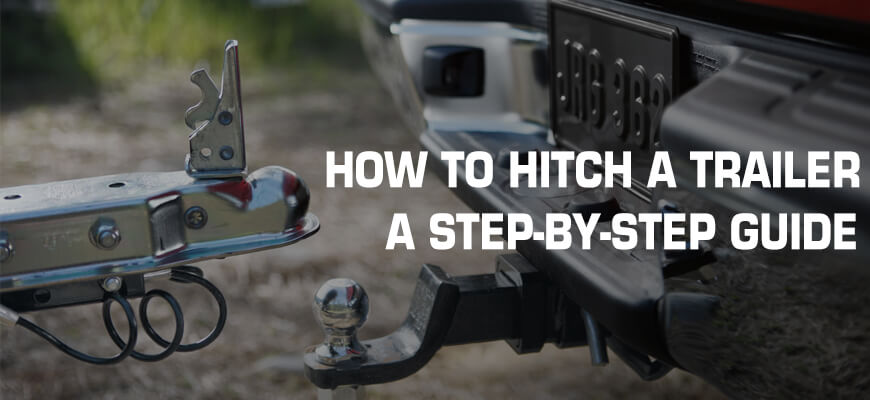
Hitching a trailer may seem like a daunting task, especially if you're new to towing. However, with the right knowledge and a step-by-step approach, you can easily learn how to hitch a trailer and ensure a safe and successful towing experience. In this article, we will guide you through the process, covering everything from preparing your vehicle and trailer to connecting them securely. So, let's get started!
Table of Contents
- 1. Before Hooking Up Your Trailer
- 1.1 Check Your Towing Capacity
- 1.2 Make Sure You’re Using the Right Hitch
- 1.3 Tend to Regular Hitch Maintenance
- 2. How to Hitch a Trailer to a Tow Vehicle for Safe Towing
- 2.1 Chock the Wheels of Your Trailer
- 2.2 Line Up the Tow Vehicle & Trailer
- 2.3 Set the Parking Brake on Your Tow Vehicle
- 2.4 Raise or Lower the Front of the Trailer to Just Clear the Hitch Ball
- 2.5 Back Up the Tow Vehicle with a Hitch Camera
- 2.6 Lower the Trailer
- 2.7 Double Check Your Locking Mechanism
- 2.8 Connect the Electrical Umbilical Cord
- 2.9 Safety Chains, Safety Chains, Safety Chains!
- 2.10 Connect the Trailer’s Breakaway Cable
- 2.11 Check Your Lights & Brakes
- 3. Final Thoughts
- 4. Hitching a Trailer FAQs
Before Hooking Up Your Trailer
Before you begin the process of hooking up your trailer, it's important to take several crucial steps to ensure a safe and successful towing experience. In this chapter, we will cover key aspects that need your attention before hitching your trailer.
Check Your Towing Capacity
One of the first and most important steps is to check your vehicle's towing capacity. Refer to your vehicle's owner's manual or consult the manufacturer's specifications to determine the maximum weight your vehicle can safely tow. Exceeding your vehicle's towing capacity can put excessive strain on its engine, transmission, and brakes, compromising both your safety and the vehicle's performance.
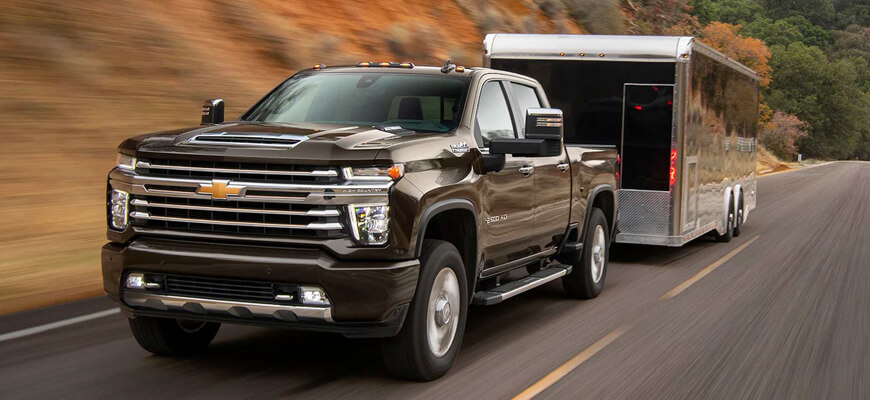
Make Sure You're Using the Right Hitch
Using the correct hitch for your trailer is crucial for a secure and stable connection. There are various types of trailer hitches available, including bumper-mounted hitches, gooseneck hitches, and fifth-wheel hitches. It's essential to select the appropriate hitch that matches your vehicle's towing capacity and the specific requirements of your trailer. Improper hitch selection can lead to dangerous situations on the road, affecting both the vehicle's handling and your overall safety.
Tend to Regular Hitch Maintenance
Regular maintenance of your trailer hitch is essential to ensure its reliability and longevity. Take the time to inspect your hitch regularly, checking for any signs of wear, rust, or damage. Lubricate the moving parts of the hitch as recommended by the manufacturer to ensure smooth operation. Keeping your hitch clean and free from debris is also important, as it can affect the hitch's performance and ease of use.
By regularly maintaining your hitch, you can identify and address any potential issues early on, preventing costly repairs or accidents down the line. Make it a habit to inspect your hitch before each towing trip, ensuring that it is in good working condition and ready for use.
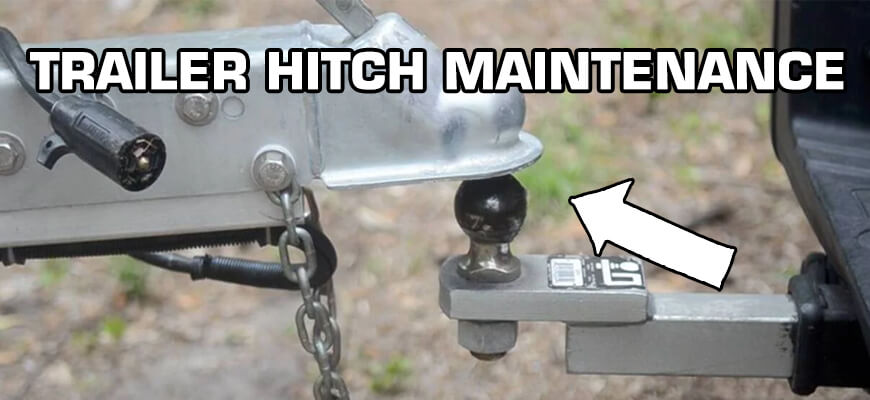
In the next chapter, we will dive into the step-by-step process of hitching your trailer to your tow vehicle for safe and successful towing. Following the guidelines outlined in this article will help you prepare for the hitching process and ensure that your trailer is securely connected to your vehicle.
How to Hitch a Trailer to a Tow Vehicle for Safe Towing
Hitching a trailer to a tow vehicle requires careful attention to detail and proper execution to ensure a safe towing experience. Follow the step-by-step guide below to hitch your trailer securely and confidently.
1 Chock the Wheels of Your Trailer
Before starting the hitching process, it's important to chock the wheels of your trailer. Place wheel chocks behind the wheels to prevent any unintentional movement during the process.

2 Line Up the Tow Vehicle & Trailer
Position your tow vehicle and trailer in a straight line, ensuring they are aligned properly. This alignment will make it easier to connect the trailer to the tow vehicle.
3 Set the Parking Brake on Your Tow Vehicle
Engage the parking brake on your tow vehicle to prevent it from rolling during the hitching process. This adds an extra layer of safety and stability.
4 Raise or Lower the Front of the Trailer to Just Clear the Hitch Ball
Use the trailer's tongue jack to raise or lower the front of the trailer until it is just above the hitch ball on your tow vehicle. This adjustment ensures that the trailer can be properly connected to the hitch.
5 Back Up the Tow Vehicle with a Hitch Camera
Using a hitch camera can greatly assist you during the backing up process. As you slowly reverse your tow vehicle, keep an eye on the hitch camera's display to ensure precise alignment between the hitch ball and the trailer's coupler. Make small adjustments to the steering wheel as necessary, using the real-time visuals provided by the hitch camera to guide you with confidence.
This technology simplifies the task of aligning the tow vehicle and trailer, making the hitching process more efficient and stress-free. Remember to take it slow and steady, relying on both the hitch camera and your spotter, if available, for optimal results.
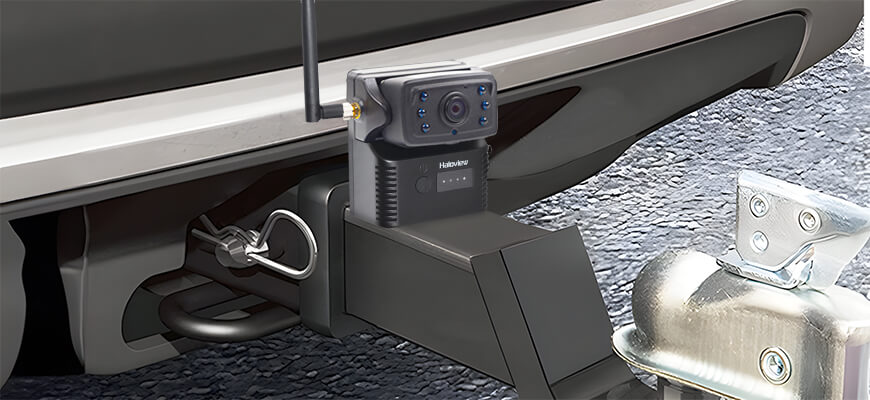
6 Lower the Trailer
Using the tongue jack, carefully lower the trailer onto the hitch ball. Make sure the coupler fully engages with the hitch ball to create a secure connection.
7 Double Check Your Locking Mechanism
Once the trailer is lowered onto the hitch ball, double-check the locking mechanism on the trailer's coupler. Depending on your hitch design, this may involve engaging a lever, inserting a pin, or latching the coupler. Verify that the locking mechanism is securely in place to prevent any accidental detachment.
8 Connect the Electrical Umbilical Cord
Connect the electrical umbilical cord from your trailer to your tow vehicle. This cord allows the trailer's lights, turn signals, and brake lights to synchronize with those of the tow vehicle, ensuring proper visibility and safety while on the road.

9 Safety Chains, Safety Chains, Safety Chains!
Attach the safety chains from the trailer to the tow vehicle. Cross the chains under the trailer's tongue to create an X pattern. These safety chains act as a backup connection in case the main hitch fails, providing an additional level of security.

10 Connect the Trailer's Breakaway Cable
If your trailer is equipped with a breakaway system, connect the breakaway cable to your tow vehicle. The breakaway cable activates the trailer's brakes in the event that it becomes disconnected from the tow vehicle, helping prevent accidents and potential damage.
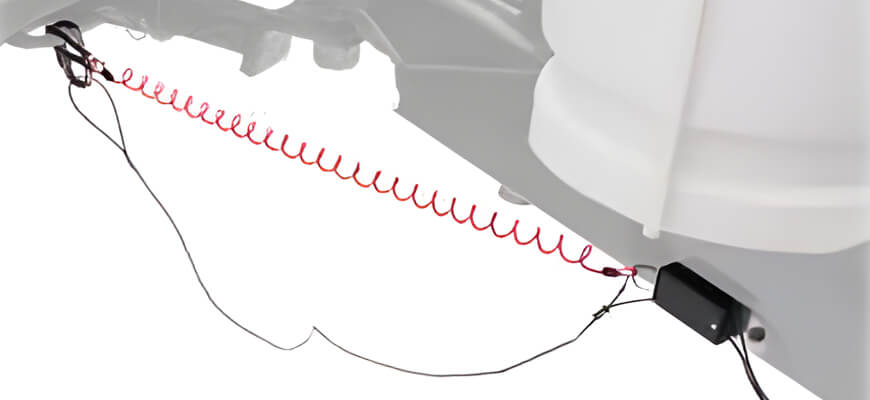
11 Check Your Lights & Brakes
Before hitting the road, perform a thorough check of all the lights and brakes on your trailer. Test the brake lights, turn signals, and running lights to ensure they are functioning properly. Additionally, check the brakes to ensure they engage and release smoothly. Address any issues before towing to maintain safety on the road.
By following these steps, you can confidently hitch your trailer to your tow vehicle and embark on your towing adventures with peace of mind. Remember to pay attention to each detail and double-check all connections, ensuring everything is secure before hitting the road. Safe travels!
Final Thoughts
Hitching a trailer doesn't have to be intimidating. By following the step-by-step process outlined in this article, you can confidently hitch your trailer and embark on your towing adventures. Remember to choose the appropriate hitch, gather the necessary equipment, and take the time to ensure a secure connection. Safe towing practices, regular maintenance, and a cautious approach will help make your towing experiences enjoyable and worry-free.
Hitching a Trailer FAQs
Q1. How do I determine my vehicle's towing capacity?
To determine your vehicle's towing capacity, consult your vehicle's owner's manual or contact the manufacturer. Towing capacity can vary depending on the make, model, engine, and optional equipment of your vehicle.
Q2. Can I tow a trailer if my vehicle doesn't have a hitch receiver?
No, a hitch receiver is necessary to tow a trailer safely. Installing a hitch receiver requires professional expertise, so consult a trusted mechanic or towing specialist to have one installed on your vehicle.
Q3. Do I need any special licenses or certifications to tow a trailer?
The requirements for licenses or certifications to tow a trailer vary by jurisdiction. In many cases, a standard driver's license is sufficient for towing recreational trailers. However, commercial trailers or specific weight classes may require additional permits or licenses. Check your local regulations to ensure compliance.
Q4. Can I back up with a trailer attached to my vehicle?
Yes, you can back up with a trailer attached to your vehicle. However, it requires practice and skill. Take it slow, use your mirrors, and make small adjustments to the steering wheel to guide the trailer in the desired direction.
Q5. How often should I inspect my trailer hitch?
It is recommended to inspect your trailer hitch, safety chains, and electrical connections before each towing trip. Additionally, perform a more thorough inspection periodically, checking for any signs of wear, rust, or damage.
